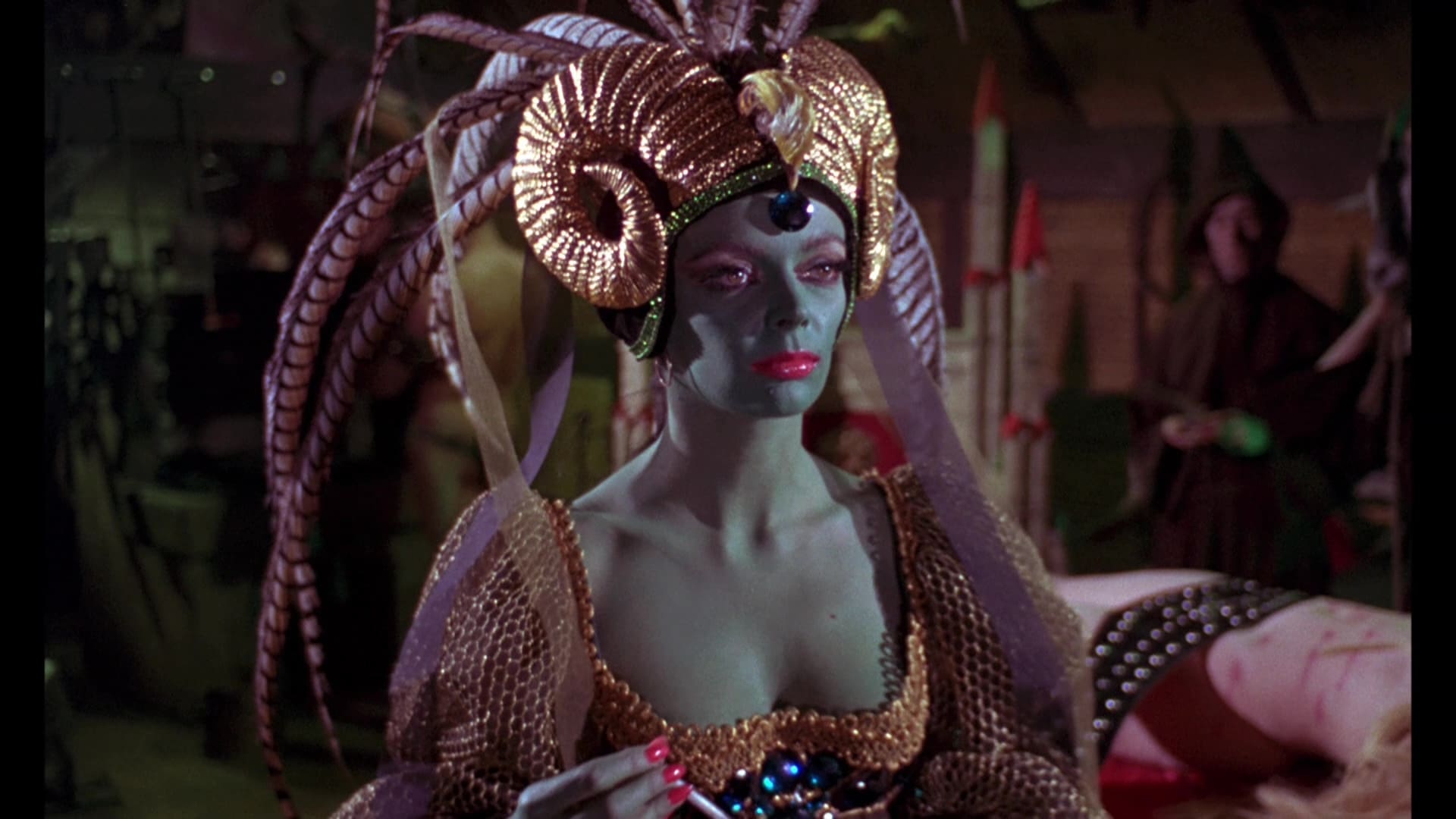_**Tigon’s version of “The Devil Rides Out”**_
An antique dealer in England (Mark Eden) travels to the village of Greymarshe to find his brother, who mysteriously went missing there. Staying at a historical lodge, he romances the young niece (Virginia Wetherell) of the owner (Christopher Lee) while an aged professor voices dire rumors of a witchy cult that may still be active (Boris Karloff). Barbara Steele is on hand as a green-skinned sorceress from the 1600s.
“Curse of the Crimson Altar” (1968), also known as “The Crimson Cult” or “The Crimson Altar,” is a Tigon production, a minor rival of Hammer, which explains how the movie is similar to "The Devil Rides Out,” aka “The Devil’s Bride,” which debuted earlier the same year. Both flicks feature Christopher Lee in a tale that involves devilish rituals. The difference is that “The Devil Rides Out” takes place in the early 30s whereas this one is set in the swinging 60s. Another difference is that Lee plays the villain here as opposed to the atypical hero in the Hammer film.
“The Devil Rides Out” went on to iconic status whereas this one fell into obscurity and has historically been difficult to find, although that’s less of a problem today with the myriad streaming channels. I like ’em both about equally, but give the edge to “Crimson Altar” for entertainment purposes, plus I didn’t find myself caring about the protagonists in “Devil” as I did in this one.
Although the original score by Peter Knight might strike some as low-rent or dated, it’s different and really distinguishes the film. I appreciate it.
There’s a cartoonish opening cult ritual sequence that I found giggle-inducing, which isn't good when the viewer is supposed to take it as a scary, diabolical ceremony. Scenes like this are challenging to pull off with a straight face, which explains why "Rosemary's Baby" (1968) didn't include overt devil-worship until the climax; and wisely brief at that.
There’s also a wild party sequence at the lodge near when the protagonist arrives that some armchair critics have called stupid, but I found it indicative of the mid-late 60’s counterculture movement in which people were “letting go” of their inhibitions while others cajoled, often for the first time in their lives, experimenting with various forms of hedonism in the name of freedom (which ironically became bondage and ruin for many). This kind of activity of course continues to this day; spring breakers are a good example.
Blonde Virginia Wetherell stands out in the feminine department; her intelligent beauty is sublime. There are several other striking women.
I can’t close without mentioning how the protagonist, Mark Eden, is reminiscent of one-Bond wonder George Lazenby from “On Her Majesty’s Secret Service” (1969).
The film runs about 1 hour, 25 minutes, and was shot at Grim's Dyke House, Old Redding, which is northwest of London, as well as other parts of Hertfordshire; not to mention Tigon Studios in the city.
GRADE: B-



